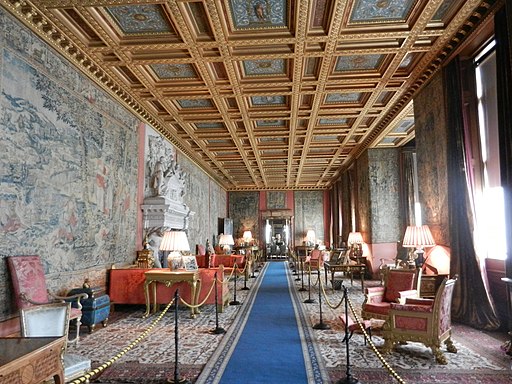Have you caught the TV series about Longleat House and the Thynn family on the BBC?
Its called All Change at Longleat and had me gripped as we witnessed the tensions that revolve around the eccentric Marquess of Bath and his son and daughter-in-law who have taken over the running of the house and estate.
Lord Bath, we discover, has handed over the control of the £190 million estate to his son, Ceawlin, but the handover isn’t going smoothly. Ceawlin, whose title is Lord Weymouth but only uses this on formal occasions, prefers to be known by his first name. With such an uncommon name as this I am sure that he is never mistaken for one of the members of the lower echelons of society.
In the first programme in the series we find out that Ceawlin has upset his father by removing some of the murals painted by the latter in the apartments where they had all lived once lived and the pair are no longer on speaking terms. In the village on the estate, there’s further unrest after Ceawlin puts up the villagers’ rents.
Meanwhile, Ceawlin’s glamorous wife Emma is settling into life at Longleat as Lady Weymouth.
In the safari park, the animal keepers wonder how Ceawlin will compare to his father. Lord Bath is still a flamboyant, controversial figure and the village fair allows the viewer to witness the awkwardness of a meeting between the son and his father. Although now in retirement, the Marquess continues to enjoy a famously open marriage. Various ‘wifelets’ still visit when his wife is away.
For me the most telling part was when Ceawlin was asked whether his childhood was a happy one, growing up at Longleat. There was quite a pause as he considered what his answer should be, then he tellingly said “Happy bits and not so happy bits.” Another pause and “it was what it was.”
He admitted that as a child he would definitely have preferred to have lived in a cottage in the village like most of his friends did. We heard how, in his teenage years, members of the public traipsed not just through the main house but also through the private apartment where he lived.
For those of us from a less privileged background, who may have occasionally dreamed of life in the upper classes, then this insight into one such family may make us realise that the grass is definitely never greener on the the other side of the hill.
Many more of us than we think may be descended from aristocratic ancestors. Be it from junior lines that have fallen away from the main family, to those who are fruits of liaisons between an aristocrat and another.
If you want to explore this fascinating part of family history research then Pen and Sword books have published
Anthony Adolph’s book: Tracing Your Aristocratic Ancestors.
http://www.pen-and-sword.co.uk/Tracing-Your-Aristocratic-Ancestors/p/3827?aid=1101
Compensated affiliate links used in the post above http://paidforadvertising.co.uk/
 Send to Kindle
Send to Kindle








